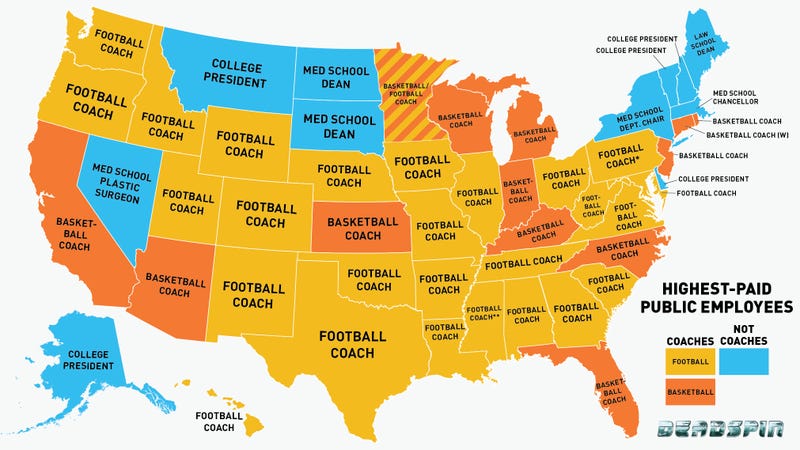This practice has irked me for decades. In higher education
we see it more
often reported in relationship to highly paid athletic coaches and athletic
directors when they are fired. The rest of us stiffs can work 30 years or more
and retire with maybe a watch or other symbol of appreciation. Not the high
rollers. On top of extraordinary salaries year after year, they walk away when they are finished with
benefits the rest of us cannot fathom.
Case in point is the Lansing State Journal story yesterday on the former Michigan State University president. It is a common practice for tenured full
professors, not for the rest of us, to get an extra year of salary when they retire for basically doing anything
they want, or not much at all. Now the janitors, food service workers and
others who make somewhere between $30,000
- $40,000 or so a year, might get handshake when they leave after 30 years. The
MSU president who made millions over the years at MSU will make an additional $700,000 for
her first retirement year and then some $562,000 year thereafter. The janitor/food worker would have to work
40 hrs a week for 14 to 18 years to see the kind of money the lame duck receives.

Of course, the president is not the highest paid campus employee. That honor would
go, like in most states, to one of our coaches. Men’s
basketball coach squeaks by on $4.2
million (2017). While head football coach got a juicy raise this year (2018) of $700,000, because $3.6 million wasn’t enough,
putting the two at parity. Lord only
knows what golden parachutes they will exit with. MSU is a public institution,
for which it is hard to justify how high these salaries go. Unless, of course you
raise the feeble neoliberal argument that the market is the supreme ruler that
trumps any other value worth consideration.
MSU doesn’t report its median salary – that point between
which half of the employees make more and half make less, at least the last time I tried
to find it. While there are many professors and administrators who make six
figure salaries the vast majority of those are between $100,000 - $300,000. A
relative handful rise above that level.
The median household income in Michigan is
$52,492. That’s a household income, not a per capita income. According
to a
study from 2016 by the Michigan League for Public Policy, Michigan is
the 11th worst state for income inequality, where the top 1% earn
more than 22 times than the bottom 99%. If MSU’s lowest salary is approximately
$30,000 then if that ratio (22) transfers to campus, the 1% would make more than
$660,000. There are probably roughly 10,000 full-time employees at MSU. The 100 highest paid would be a rough equivalent
of the 1%. Our highest paid coaches each make about 140 times the lowest paid
employee. Of course golden parachutes are never calculated into the 1% income
stream. They are hidden.
Growing income inequality is one of the biggest challenges
facing the human family here and abroad. While raising the floor to ensure
everyone can live a decent life for working 40 hours will help, the unconstrained acceleration of wealth
accumulation at the top needs to be halted if this gap is to reach some more
morally defensible level. You would think a public institution would have that
as a key goal and want to provide a model for its students to observe . But if we continue to hire leaders who continue
to imbibe the neoliberal kool-aid, we can be sure the accelerating inequality
will grow. Perhaps the LSJ story can inspire a serious conversation about this
most serious and growing problem.

No comments:
Post a Comment